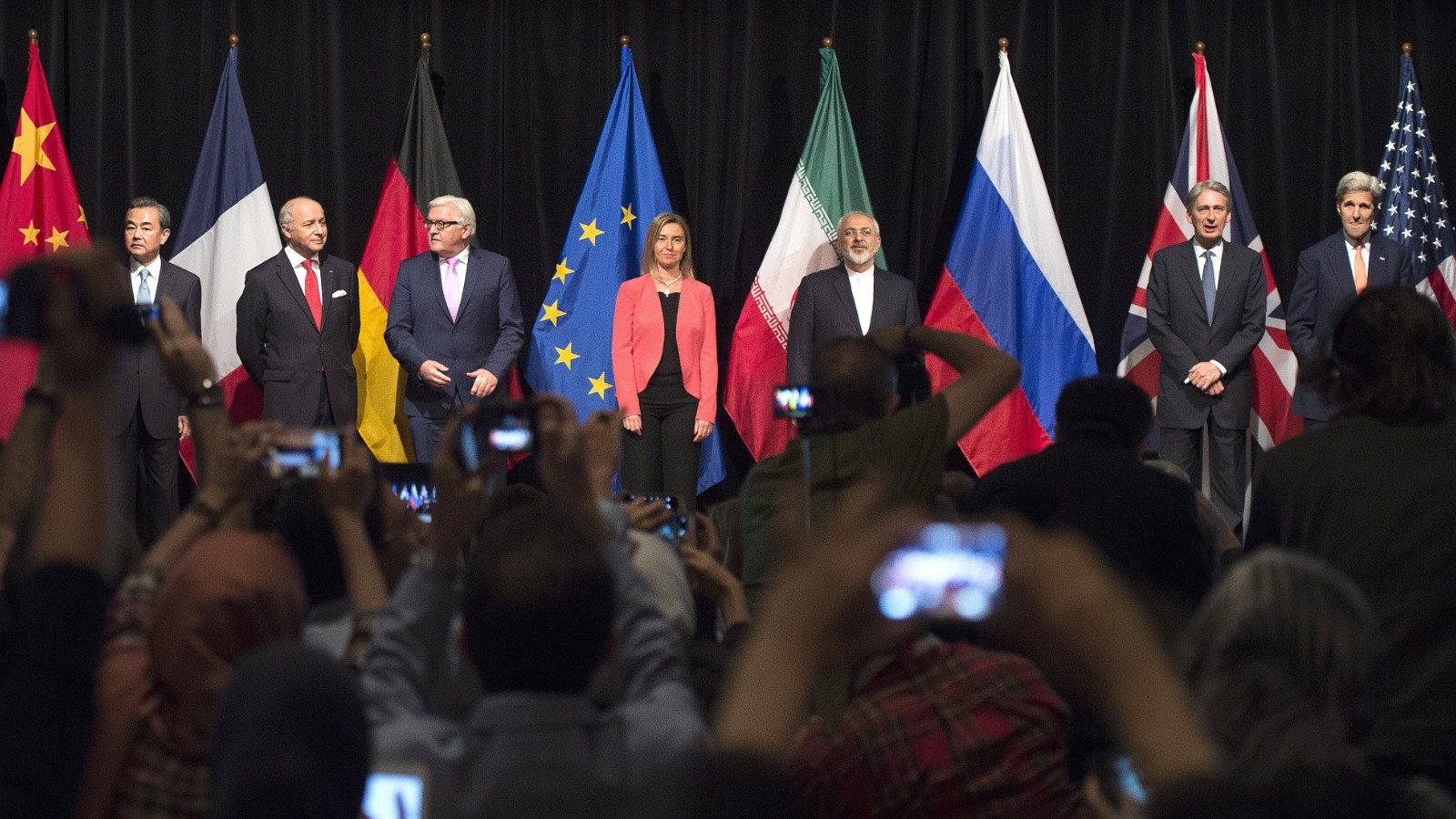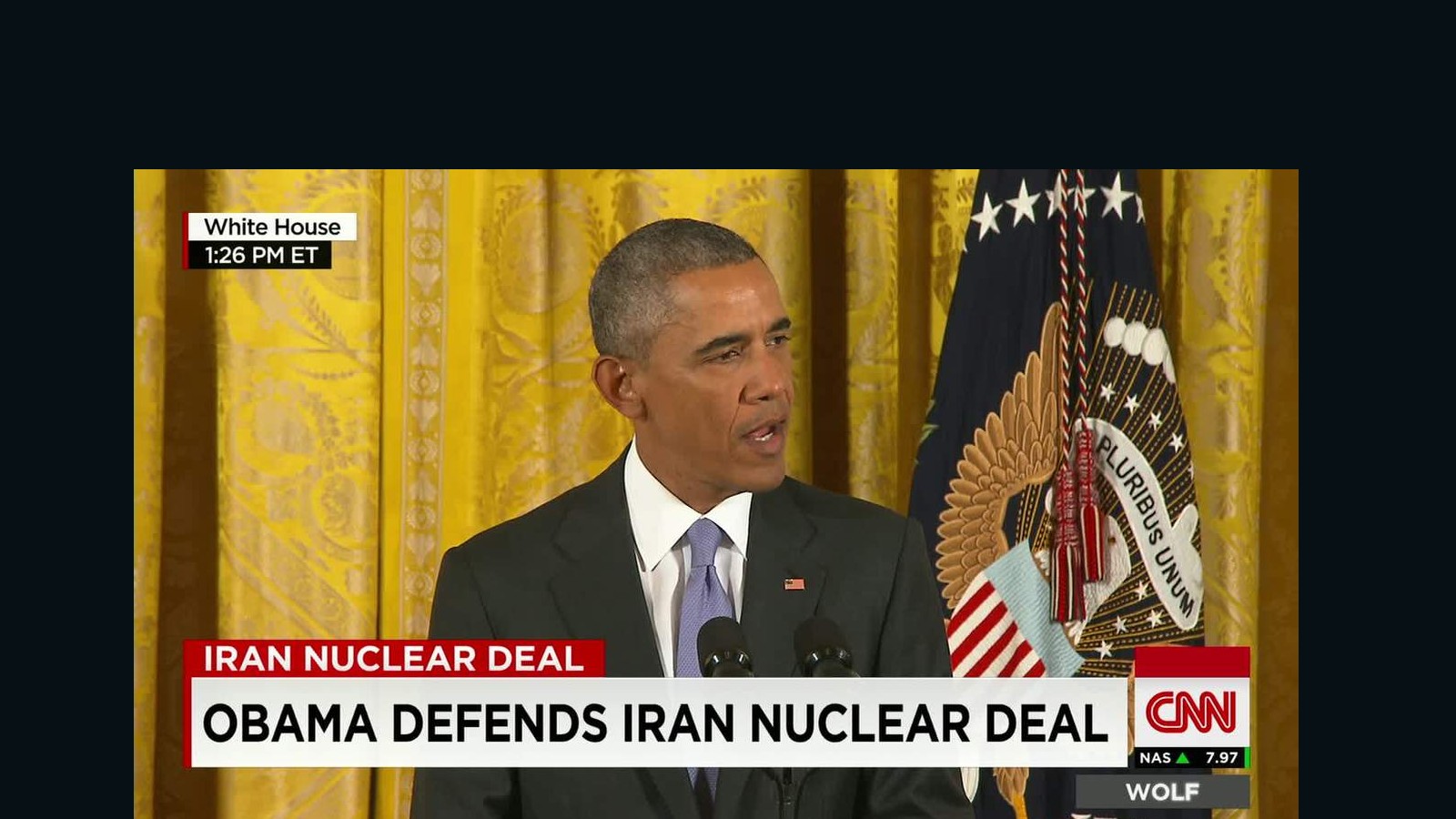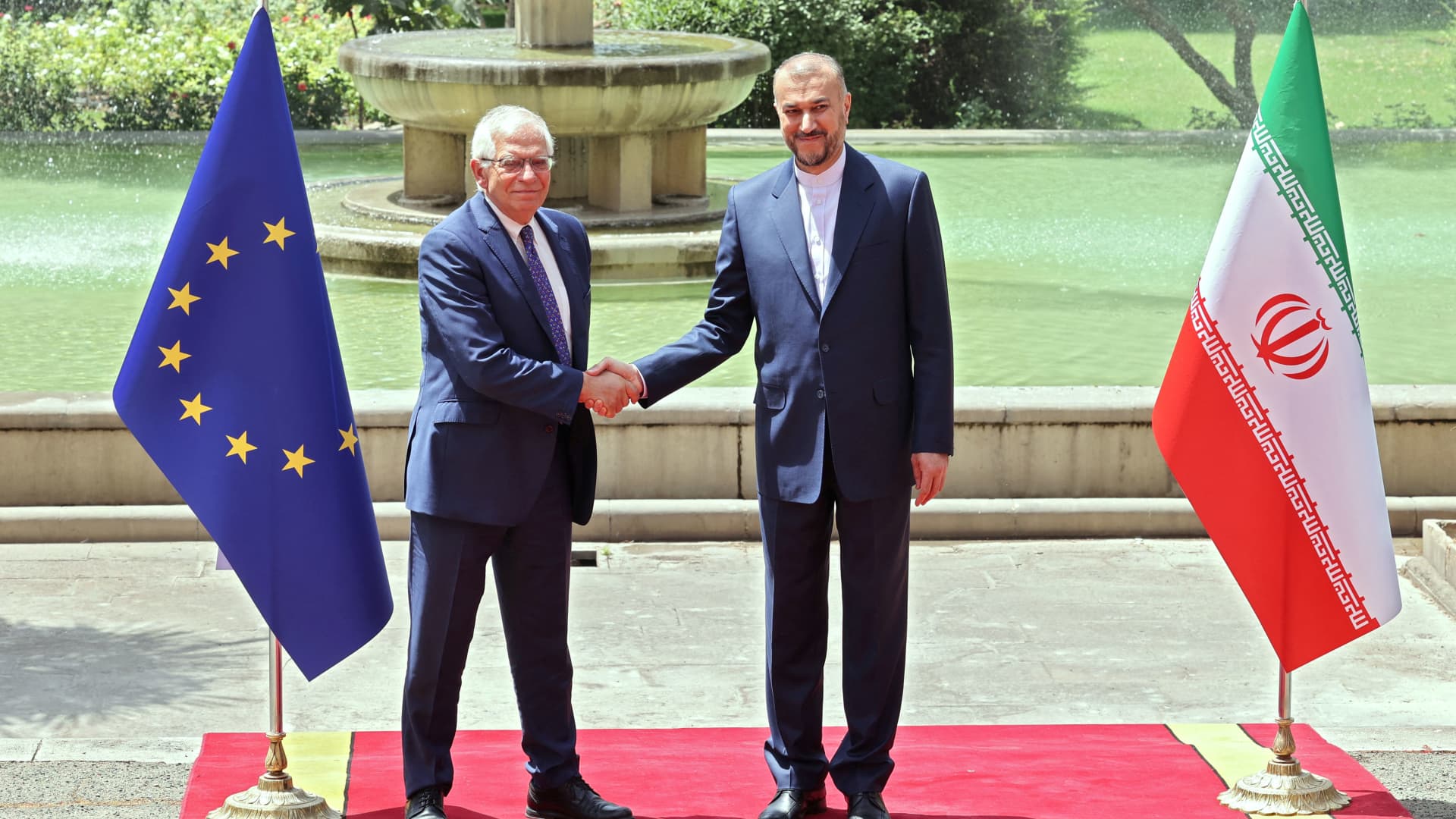Unraveling The Iran Nuclear Deal: Who Really Negotiated It?
**The Iran nuclear deal, formally known as the Joint Comprehensive Plan of Action (JCPOA), stands as one of the most complex and contentious diplomatic achievements of the 21st century. Its negotiation involved a delicate dance between global powers and a determined Iran, aiming to curb Tehran's nuclear ambitions in exchange for significant sanctions relief. Understanding "who negotiated the Iran deal" requires delving into the intricate web of international diplomacy, identifying the key players, their motivations, and the painstaking process that led to this landmark agreement.** This article will unpack the layers of these negotiations, providing a comprehensive overview of the nations, individuals, and strategic considerations that shaped the JCPOA, a deal that continues to spark debate and influence global geopolitics. The journey to the JCPOA was fraught with challenges, marked by years of international pressure, sanctions, and a persistent Iranian nuclear program. The ultimate agreement, reached in 2015, represented a pivotal moment in non-proliferation efforts, demonstrating both the potential and the limitations of multilateral diplomacy. By examining the roles of the various parties involved, we can gain a clearer picture of the monumental effort required to bring such a complex accord to fruition and appreciate why the question of "who negotiated the Iran deal" remains central to its legacy. --- **Table of Contents:** * [The Genesis of a Landmark Agreement: Understanding the JCPOA](#genesis-jcpoa) * [The Key Players: Nations at the Negotiating Table](#key-players) * [The Diplomatic Dance: A Timeline of Negotiations](#diplomatic-dance) * [The American Architects: Behind the US Negotiation Team](#american-architects) * [Iran's Negotiators: A Nation's Stance](#irans-negotiators) * [The Core Mechanics: What the Deal Entailed](#core-mechanics) * [Nuclear Program Restrictions](#nuclear-restrictions) * [Sanctions Relief and Snapback Mechanisms](#sanctions-snapback) * [Monitoring and Verification](#monitoring-verification) * [The Aftermath: Withdrawal and Future Prospects](#aftermath-withdrawal) * [The Debate: Supporters vs. Opponents](#debate-supporters-opponents) ---
The Genesis of a Landmark Agreement: Understanding the JCPOA
To truly understand "who negotiated the Iran deal," one must first grasp the essence of the agreement itself. The Joint Comprehensive Plan of Action (JCPOA), more commonly known as "the Iran nuclear deal," is a 2015 agreement between Iran and several world powers. Its primary objective was to restrict Iran’s nuclear program in exchange for relief of international sanctions on Iran. For years leading up to 2015, the international community had expressed grave concerns about the nature of Iran's nuclear activities, fearing they could lead to the development of nuclear weapons. Iran, conversely, maintained that its nuclear program was solely for peaceful energy purposes. The JCPOA sought to bridge this chasm of distrust through a meticulously crafted framework. This deal was not merely a simple exchange; it was a comprehensive blueprint designed to provide assurances to the international community that Iran's nuclear program would remain exclusively peaceful. In return, Iran would gain access to the global economy, which had been severely hampered by years of crippling sanctions. The agreement was a culmination of intense diplomatic efforts, building on previous attempts to address the nuclear issue, and aimed to create a verifiable pathway to prevent nuclear proliferation in the Middle East. The very foundation of the JCPOA was built on the premise that a diplomatic solution was preferable to military confrontation, a sentiment echoed by many involved in the painstaking process.The Key Players: Nations at the Negotiating Table
The question of "who negotiated the Iran deal" is fundamentally answered by identifying the specific nations and entities that sat across the table from Iran. The deal was negotiated between Iran and a group of countries that included the U.S., Russia, the U.K., Germany, France, China, and the European Union (EU). This formidable group is widely referred to as the P5+1, representing the five permanent members of the United Nations Security Council (China, France, Russia, the United Kingdom, and the United States) plus Germany. The "plus one" (Germany) was included due to its significant economic and diplomatic ties with Iran and its role in previous diplomatic efforts concerning Iran's nuclear program. Each of these nations brought its own unique perspective, strategic interests, and diplomatic leverage to the table. The P5+1, with the nuclear energy program of the seventh (Iran), formed the core of these high-stakes discussions. The European Union, represented by its High Representative for Foreign Affairs and Security Policy, played a crucial coordinating role, facilitating communication and bridging gaps between the various parties. This multilateral format underscored the global nature of the nuclear proliferation concern and the necessity of a unified international front to address it. The collective weight and diplomatic experience of these world powers were instrumental in pushing the negotiations forward, demonstrating a rare degree of international consensus on a critical security issue.The Diplomatic Dance: A Timeline of Negotiations
The path to the JCPOA was a protracted "diplomatic dance" spanning several years, culminating in a critical phase in 2015. Negotiations for a framework deal over the nuclear program of Iran took place between the foreign ministers of the countries at a series of meetings held from March 26 to April 2, 2015, in Lausanne, Switzerland. This week-long marathon session was crucial, laying the groundwork for the comprehensive agreement that would follow. It was during these intense discussions that the broad outlines of the future deal were hammered out, setting the stage for the technical details to be finalized. Following the Lausanne framework, negotiators continued their work, meticulously drafting the specifics of the agreement. The final text of the JCPOA was adopted on July 14, 2015. However, the deal did not go into effect immediately. The deal went into effect on January 16, 2016, after the IAEA verified that Iran had completed steps, including shipping 25,000 pounds of enriched uranium out of the country, dismantling and removing centrifuges, and other critical actions to roll back its nuclear program. This "Implementation Day" marked a significant milestone, signifying Iran's initial compliance and the commencement of sanctions relief. The journey was long and arduous, filled with numerous deadlines, extensions, and moments of near collapse, but the persistence of "who negotiated the Iran deal" ultimately led to its implementation.The American Architects: Behind the US Negotiation Team
Within the P5+1, the United States played a particularly central role in the negotiations, reflecting its historical leadership in non-proliferation efforts and its significant economic leverage through sanctions. The deal was negotiated by the democratic administration of the U.S., specifically under President Barack Obama. While President Obama provided the overarching political direction, the day-to-day negotiations were led by a team of experienced diplomats and technical experts. A key figure in this process was the U.S. Secretary of State during that pivotal moment. As Secretary of State, this individual not only supported this decision—they championed it. This statement underscores the deep personal and political commitment of the Obama administration's top diplomat to achieving the deal. The American team worked tirelessly, engaging in both direct and indirect talks with their Iranian counterparts, often through intermediaries or in separate rooms. Their efforts were driven by a belief that a diplomatic solution was the most effective way to prevent Iran from acquiring nuclear weapons, a conviction that time has validated what they knew. The complexity of the American political system, with its checks and balances, also meant that the negotiating team had to constantly consider domestic political realities, including strong opposition from certain factions in Congress. This internal dynamic added another layer of challenge to the already intricate international negotiations.Iran's Negotiators: A Nation's Stance
On the other side of the negotiating table was Iran, represented by its own team of seasoned diplomats and nuclear experts. The question of "who negotiated the Iran deal" from the Iranian side primarily points to their Foreign Minister and the head of their Atomic Energy Organization, who led the technical discussions. For Iran, the primary motivation for engaging in these talks was the prospect of sanctions relief. Years of international sanctions had crippled Iran's economy, severely impacting its oil exports, financial transactions, and access to global markets. As Iran implements this deal, it would receive gradual relief from sanctions, a crucial incentive for their participation. The Iranian negotiating team operated under the ultimate authority of the Supreme Leader, Ayatollah Ali Khamenei, who set the red lines for the negotiations. Their strategy involved safeguarding Iran's right to peaceful nuclear technology while seeking to alleviate the economic pressures on their nation. The negotiations were a delicate balancing act for Iran, as they had to navigate internal political divisions and public sentiment, which often viewed the nuclear program as a matter of national pride and sovereignty. The Iranian negotiators demonstrated remarkable resilience and strategic acumen, engaging in protracted discussions and pushing for concessions that would preserve key aspects of their nuclear infrastructure while still meeting the international community's demands for transparency and restrictions. Their ability to hold firm on certain principles while also demonstrating flexibility was key to the eventual agreement.The Core Mechanics: What the Deal Entailed
Understanding the intricacies of the JCPOA is essential to appreciating the monumental task faced by "who negotiated the Iran deal." The agreement was not a simple handshake; it was a detailed, technical document designed to address specific concerns about Iran's nuclear capabilities.Nuclear Program Restrictions
The JCPOA imposed significant limits on Iran’s nuclear program in return for sanctions relief. These restrictions were designed to significantly increase Iran's "breakout time"—the theoretical period it would take for Iran to produce enough weapons-grade fissile material for one nuclear weapon. Before the deal, this time was estimated to be a matter of weeks. Today, because of the Iran deal, it would take Iran 12 months or more. This extended timeline provided the international community with a crucial buffer, allowing ample time for detection and response if Iran were to deviate from its commitments. Specific measures included: * **Reduction of Enriched Uranium Stockpile:** Iran was required to ship 25,000 pounds of enriched uranium out of the country, reducing its stockpile by 98%. * **Limitation on Enrichment Levels:** Iran committed to enriching uranium only up to 3.67% purity, far below the 90% needed for weapons-grade material. * **Centrifuge Limitations:** Iran agreed to reduce its number of operating centrifuges by two-thirds and to use only older, less efficient models for a period. * **Redesign of Arak Reactor:** The heavy water reactor at Arak was to be redesigned to prevent it from producing weapons-grade plutonium. * **No New Enrichment Facilities:** Iran committed not to build any new heavy water reactors or enrichment facilities for a specified period.Sanctions Relief and Snapback Mechanisms
A core incentive for Iran to enter the deal was the promise of sanctions relief. As Iran implements this deal, it would receive gradual relief from sanctions imposed by the U.S., EU, and UN. This included lifting sanctions related to Iran's nuclear program, allowing Iran to re-enter the global financial system and oil markets. However, the deal also contained a robust "snapback" mechanism. If it violates any aspect of this deal, sanctions that have crippled Iran's economy will snap back into place. This provision was a critical deterrent, ensuring that Iran would face immediate and severe economic consequences for any non-compliance. The snapback mechanism was designed to be swift and automatic, removing the need for new UN Security Council resolutions, thereby preventing any single country from blocking the re-imposition of sanctions.Monitoring and Verification
A cornerstone of the JCPOA was its unprecedented monitoring and access provisions, ensuring that the international community could verify Iran's compliance. The International Atomic Energy Agency (IAEA) played a central role in this. The deal went into effect on January 16, 2016, after the IAEA verified that Iran had completed steps, including shipping 25,000 pounds of enriched uranium out of the country, dismantling and removing equipment. The IAEA was granted extensive access to Iran's declared nuclear sites, as well as the ability to request access to other suspicious sites. And with the unprecedented monitoring and access this deal puts in place, if Iran tries to cheat, we will know and sanctions will snap back into place. This robust verification regime was designed to provide long-term assurance that Iran's nuclear program remained peaceful and to detect any potential clandestine activities.The Aftermath: Withdrawal and Future Prospects
Despite the careful negotiations and the initial implementation, the JCPOA faced significant challenges in the years following its inception. The question of "who negotiated the Iran deal" became less about its creation and more about its undoing. In withdrawing the U.S. from the Iran nuclear deal, President Donald Trump outlined a rationale that contradicted the analyses of U.S. intelligence agencies and many international allies. President Trump withdrew from the deal in May 2018, arguing that it was fundamentally flawed and did not adequately address Iran's ballistic missile program or its regional activities. He reimposed sanctions, initiating a "maximum pressure" campaign against Iran. This withdrawal created a significant rift between the U.S. and its European allies, who largely remained committed to the deal. The 2015 Iran nuclear deal was set to expire over 10 to 25 years, with different provisions phasing out at different times. Trump's withdrawal, however, effectively dismantled the U.S. commitment to the agreement long before its sunset clauses. Both Trump, who withdrew from the agreement, and Biden wanted a new deal but it never happened. Subsequent attempts to revive the deal or negotiate a new one have proven exceedingly difficult. The Iran nuclear deal negotiations initiated in 2025 under U.S. Donald Trump sought to limit Iran’s nuclear program and military ambitions after Trump scrapped an earlier deal in 2018. However, these efforts have been hampered by a lack of trust, escalating regional tensions, and Iran's own advancements in its nuclear program in response to the renewed sanctions. Iran has suspended nuclear talks with the US after Israel’s surprise attack on its nuclear facilities, while President Trump continues to urge Iran to enter into a deal to prevent further descalation. This highlights the volatile and unpredictable nature of the current situation, far removed from the carefully constructed framework of the JCPOA.The Debate: Supporters vs. Opponents
The Iran nuclear deal has been a subject of intense debate since its inception, and the arguments continue to shape discussions about its potential future. The differing perspectives on "who negotiated the Iran deal" and its effectiveness reveal fundamental disagreements about foreign policy and national security. Supporters of a deal with Iran have consistently argued that opponents do not offer a viable alternative, or that the only alternative is war. They contend that the JCPOA, despite its imperfections, effectively cut off Iran's pathways to a nuclear weapon and established an unprecedented verification regime. They emphasize that the deal provided a diplomatic solution to a critical security threat, preventing a potentially devastating military conflict. Furthermore, they highlight that the deal had the full backing of the international community, making it a powerful tool for non-proliferation. For them, the agreement was a pragmatic solution that achieved its core objective of preventing a nuclear-armed Iran. On the other hand, opponents of the deal, including figures like Benjamin Netanyahu, argued that the alternative to the deal currently being negotiated is a better deal, because, he said, Iran needs a deal more than the West does. Critics believed the JCPOA was too lenient, did not address Iran's ballistic missile program or its destabilizing regional activities, and that its sunset clauses would eventually allow Iran to become a nuclear threshold state. They argued that a stronger deal, with more permanent restrictions and broader scope, could have been achieved given Iran's economic vulnerability. This fundamental disagreement over the "better deal" versus "no viable alternative" dichotomy continues to define the discourse surrounding the JCPOA, making any future negotiations incredibly challenging. --- **Conclusion** The question of "who negotiated the Iran deal" reveals a complex tapestry of international diplomacy, involving the concerted efforts of the P5+1 nations, the European Union, and Iran itself. This landmark agreement, the JCPOA, was the product of painstaking negotiations aimed at curbing Iran's nuclear program in exchange for sanctions relief. From the initial framework discussions in Lausanne to the final implementation day, the process was fraught with challenges, requiring immense diplomatic skill and political will from all parties involved. While the deal successfully implemented robust restrictions and monitoring mechanisms, its subsequent unraveling following the U.S. withdrawal has plunged the situation into renewed uncertainty. The ongoing debate between supporters, who see it as the only viable alternative to conflict, and opponents, who believe a better deal is possible, underscores the enduring complexity of the issue. As we look to the future, the lessons learned from the negotiation and implementation of the Iran nuclear deal remain crucial for navigating the intricate landscape of nuclear non-proliferation and international security. We hope this comprehensive overview has shed light on the intricate process and the key players behind one of the most significant diplomatic achievements of our time. What are your thoughts on the Iran nuclear deal and its legacy? Share your perspectives in the comments below, or explore more of our articles on international relations and diplomacy.Article Recommendations



Detail Author:
- Name : Shaylee Pfannerstill
- Username : quitzon.wilfrid
- Email : crolfson@dicki.net
- Birthdate : 1984-11-11
- Address : 44151 Lakin Pike East Lea, KS 12795
- Phone : (832) 745-4327
- Company : Bahringer-Brown
- Job : Administrative Services Manager
- Bio : Culpa ut velit possimus sit nulla. Qui repellat molestias officiis voluptatem. Quia dolores sequi eum eum.
Socials
twitter:
- url : https://twitter.com/hettingert
- username : hettingert
- bio : Quia ut et aut sunt esse. Aliquam sed et modi dolor. Quam error aut non ipsam. Quia nobis qui laudantium. Non eos est iure asperiores.
- followers : 5049
- following : 892
tiktok:
- url : https://tiktok.com/@hettinger2020
- username : hettinger2020
- bio : Non qui aut quo eos alias accusantium et sed.
- followers : 415
- following : 2772